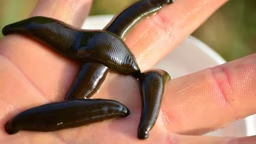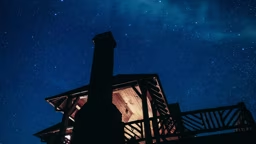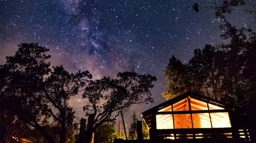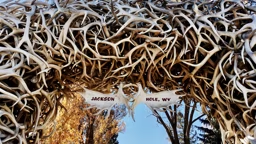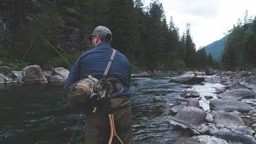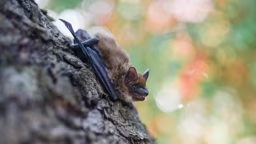
Birds flock to landscapes that provide food, water, cover and places to raise their young. Birdfeeders and nest boxes will attract some birds, but the greatest variety of birds visit three-dimensional landscapes full of locally native plants. And watching birds living in a natural setting, not just clustered around feeders, is more fun for people, too.
Food
Bird food isn’t just purchased at the store. Home landscapes can produce a wide variety of nutritious food birds love: seeds, berries, nuts—and even insects.
-
Seeds: Refrain from deadheading native flowers, such as asters or coneflowers, and watch birds gobble up the seeds. Allow native grasses, like switchgrass, to remain standing in the fall, and birds will munch on the seeds throughout winter. Even conifer cones contain seeds birds can extract.
-
Berries: Choose native trees, shrubs and vines carefully and birds will have berries all year long. Serviceberry and dogwood, for example, produce berries in spring and early summer; brambles and wild cherries in mid to late summer; and bayberries and juniper berries remain throughout the winter. Berries high in fat, like bayberries (which are over 50 percent fat), provide much-needed energy for both resident birds and migrants.
-
Nuts: Still other native trees and shrubs, such as oaks and hickories in many parts of the country, produce nuts many birds love.
-
Insects: Birds eat insects, too, but how can a homeowner provide insects? One way is to use as few pesticides as possible. This is not only safer for birds but also avoids killing this important food source.
Another way is to leave some dead trees or plants in the landscape. Where safety is not a concern, leaving dead branches—or even entire dead trees (known as snags)—creates insect “grocery stores” that birds, such as woodpeckers, patronize. Many other birds, including a variety of sparrows, love scratching for insects hiding in leaf litter left under trees and shrubs. But most important is to choose plants that support insects.
Douglas Tallamy, author of Bringing Nature Home, found in his research that some plants sustain significantly more insects than others. Which plants? Native species, especially, for example, oaks and cherries. Besides eating insects themselves, most birds require an abundant source of insects and spiders to feed their young.
How abundant? Tallamy, for example, found that it takes between 6,240 and 10,260 caterpillars to fledge a single clutch of chickadees. In other words, birds eat so many insects that few are left to damage plants. Planting native plants that support abundant insect life is one of the most bird-friendly things people can do.
Water
If no natural water features are nearby, a birdbath satisfies birds’ needs for drinking and bathing. It doesn’t have to be a pedestal birdbath. Birds will use a shallow, non-slippery basin on the ground. Location is important. Place birdbaths in an open area with shrubs or trees nearby so birds can spot predators. Cleaning birdbaths every day or so protects birds’ health and also prevents mosquitoes from developing.
Cover
Birds need places protected from severe weather and from predators. Groups of shrubs and trees provide cover most of the year, and evergreens, such as arborvitae, provide cover in winter, too. Snags also provide cavities that become cozy places for birds to spend cold winter nights. Nests and Nesting Materials People can help cavity-nesting birds, such as chickadees, by installing species-specific, easy-to-clean nest boxes. But cavities in snags are also excellent natural nesting sites and need no maintenance.
Not all birds nest in cavities, though. Native trees and shrubs provide nesting places for other birds, like cardinals. And since these native plants also provide a ready source of insects to feed their babies, parents can stay near the nest, increasing nesting success. Other birds nest in meadows. Homeowners lucky enough to have a meadow can adjust their mowing schedules to accommodate birds’ nesting seasons.
No matter where they nest, birds need building materials—simple bits of nature, such as dead grasses, twigs, moss, even mud that are often missing in neatened, turf-dominated landscapes. By allowing at least part of their landscape to be less manicured—a little bit “wild”—homeowners provide the variety of materials different bird species need to create their own unique nests.
Creating a Natural Habitat
Birds’ territories are larger than most home landscapes, so a single home landscape doesn’t have to provide habitat elements already available nearby. Figure out what’s missing in the larger landscape and supply those features to create a complete habitat that meets birds’ needs. Once designed and planted, a natural landscape is easy and inexpensive to maintain. It will provide a healthy habitat for many generations of birds and also an enjoyable experience for many generations of people.
Writer and speaker Janet Allen offers advice for creating spaces for wildlife at ourhabitatgarden.org.



